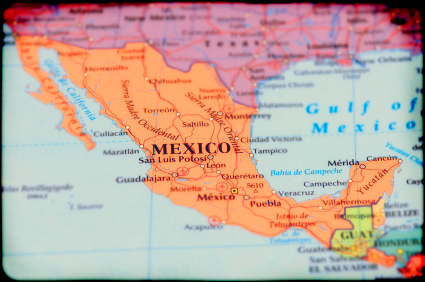
The New York Times revealed last week that the Trump administration was poised to shift program funds in order to provide Mexico with about $20 million in assistance in return for Mexico doing more to enforce its immigration laws and secure its southern border against trespass by Central Americans trekking through en route to the United States.
The Times, in typical fashion, could not help expressing its sense of irony that, instead of getting Mexico to pay for a U.S. southern border wall, we would be paying them for immigration enforcement.
Whether or not Mexico will be open to such a proposal remains to be seen; my colleague Kausha Luna has posted a blog on the matter, noting that Mexico's president-elect, Andrés Manuel López-Obrador ("AMLO" as he is affectionately referred), a nationalist-populist-leftist, may be cool to the proposal. Based on his past statements, including references to the "right" of peoples to migrate to the United States, there is certainly reason to doubt that he will be much enamored of the offer.
But conversely, AMLO has also shown a sensitivity to the needs and desires of the poorest segments of Mexico's population, saying that they should not be forced into migration out of need or corrupt government (see here and here). Presumably, this sensitivity might also lead to recognition that untrammeled third-country immigration through Mexico will inevitably complicate efforts on behalf of Mexico's dispossessed.
Certainly much could be done to shore up the interests of both of our populist presidents as regards their respective constituencies where control of Mexico's southern border and policing of the cartels and smuggling networks are concerned. This was highlighted in a September 14 article in National Review Online, "A Better Approach Toward Mexico", by Reihan Salam:
The coming inauguration of Andrés Manuel López Obrador, Mexico's president-elect, offers an opportunity for a reset. Most expect that the relationship between Trump and López Obrador will be antagonistic, as both men are purportedly uncompromising nationalists who will of course find themselves at loggerheads. Yet it's also true that, as I observed last month, the desires of both men are in a sense congruent — "reducing emigration driven by desperation, in López Obrador's case, and reducing immigration driven by it, in Trump's."
This is particularly true where third-country migration from Central America's "Northern Triangle" (El Salvador, Guatemala, and Honduras) is concerned, as was highlighted in a Wilson Center report, Reflections on Mexico's Southern Border, published in April 2015. Note, particularly, "The Dynamics on the Mexico-Guatemala Border" by Ernesto Rodríguez Chávez, which begins on page 10 of the report. As Chávez states in pertinent part:
A new cycle of increased controls and greater detention of Central American migrants crossing the Mexico-Guatemala border in irregular transit to the United States is evident. It highlights that for the first time there has been a reduction in the number of migrants who get aboard the freight train due to the surveillance of immigration authorities and other security forces. As a result the immigration station and the state shelter for migrant children in Tapachula are at maximum capacity. The official data of the National Migration Institute demonstrates that 120,000 Central American migrants were taken to holding centers in 2014, which is 48% more than the previous year. In 2015, the increase in apprehensions continued with more than 25,000 total cases in January and February, almost double the amount during the same period in 2014 (yet still below the levels of migrants detained between 2000 and 2006). Similarly, the number of unaccompanied minors detained during January and February of 2015 was nearly twice as many as were detained during the same period in 2014.
It's worth observing that nationals from those three Central American countries constitute the greatest challenge for American southern border security efforts right now, because of the massive scale of illegal crossings consisting of unaccompanied minors and partial family units — a dilemma that our government has been trying to confront unsuccessfully since at least 2013. Halting this flow at or close to the source of origin would aid the United States. And it is clear that Mexican efforts to stem the flow for their own self-interested reasons are inhibited by financial constraints.
But let no one think that this initiative, whether it takes root or not, is a replacement for a physical barrier, because it doesn't take into account the egregious volume of illicit traffic constantly moving in both directions of the U.S.-Mexico border: drugs and human beings (some of them dangerous) flow northward, providing profits for unscrupulous and violent transnational gangs and cartels; money and weapons flow southward in return. It is an unholy cycle that fuels corruption and taints government at all levels, particularly — but not exclusively — in Mexico.
